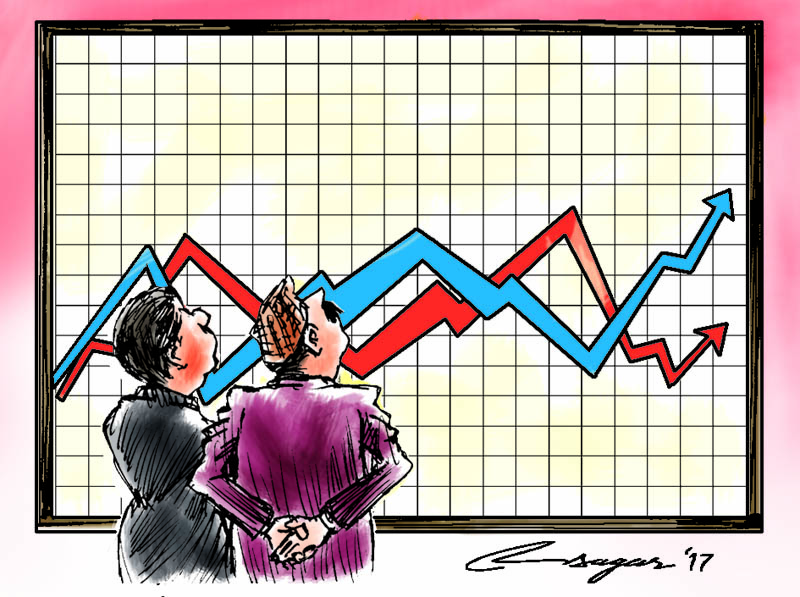Efficient capital market: Its mechanism
What most investors normally do is hold on to their investment for as long as they can, and after they off-load it, never look back at it again. This mentality stems from the fact that people get emotionally tied up with the security they own
Apart from analyzing change in profits and a few financial ratios viz. earnings per share (EPS), price to earnings ratio (P/E), and Net Worth, a typical Nepali stock market investor would not choose to go any further before making his investment decision.
I have been an active investor myself and have closely looked into the mechanism of Nepali capital market. The catalysts that trigger a buy/sell decision, according to a research by Bharat Singh Thapa who studied the investment behavior of Nepali investors, are based mostly on recommendations and rumors.
The research showed that the percentage of retail investors whose investment decisions are based on such factors represent a staggering forty-five and a few basis points.
This number, as alarming as it sounds, is not surprising. For a market that is defined as ‘Inefficient’ in financial terms, maybe the above mentioned factors are the only ones that are needed to make a rational investment decision.
Markets like Nepal where psychology is the predominant driver of stock market swings, fundamental and technical analysis are yet to establish their strong foot-hold.
When people talk about Nepali capital market as being inefficient, it shouldn’t be assumed that virtually every investor in a well-developed, efficient market has the intellectual prowess to pick the best of the financial securities available.
It’s actually the asset managers, investment bankers and other financial institutions that try to act rationally, based on their analysis, to bring a financial security to its equilibrium point.
Alpha is a term that usually does not a standing place in Nepali investment community. Alpha is a regression coefficient, or typically knows as a Jensen’s alpha, that, according to Investopedia, is a risk adjusted performance measure to analyze the performance of a portfolio based on a certain risk level, typically reflected by beta.
Looking just at the return without giving much attention to the risk level is what gets people into trouble because they are allured by the high return prospect but fail to assess the risk level of a security. Alpha, if positive, compensates for the risk level indicated by beta and should be a better alternative from a portfolio that has a negative alpha.
Going back to Nepse, how often do we notice a company with negative earning records surpass a comparable company with positive EPS and good cash flow? How much of the future expectation is discounted and how much into the future a typical investor looks into before making a buy or sell decision?
An intrinsic value for a stock is a mix of adjusted historical records, and discounted future expectations but, this method of calculating a probable intrinsic value has yet to become mainstream in Nepali capital market.
An investor needs to hone the ability of controlling his emotions and should be able to take multiple positions for a same security. This is a strategic maneuver that might sound simple to undertake but is actually very difficult to execute.
Someone who bought Chilime at Nrs1000 and sold it at Nrs2000 and took the position again at Nrs1100 is a rational and prudent investor. What most investors normally do is hold on to their investment for as long as they can, and after they off-load it, never look back at it again.
This mentality stems from the fact that people get emotionally tied up with the security they own and falsely believe that the stock is always undervalued and therefore, refrain from selling it. The ability to trade the same security more than once tells that emotion did not play a dominant role, rather rationality did.
What about the timing of investments? What is the right time to enter the market? Or should you take a plunge with as little information as possible which would, quite naturally, increase the risk threshold? The same research by Bharat Singh Thapa indicates that around forty one percentage of retail investors base their investment decisions on “Media Stories’.
This is a single factor that had the highest weight among all other factors that determined the investment decision for a Nepali Investor.
If people are looking at news and waiting for big chunks of information before they invest, the train will leave the platform meaning the prices would have already adjusted the information from the news and they will be forced to buy the security at inflated prices.
Thus, one needs to be able to act with as little information as possible by gauging the probabilities of the best, base, and worst case scenarios. It is said “If you can act on the mere twenty percent information and the probability statistics that you have, you’ll end up buying ‘gold’.”
The move from inefficiency towards efficiency is not a sprint but a marathon. Overall financial system and infrastructures need to be gradually updated to move towards a more efficient state.
The economy, financial institutions and investors need to move in a tandem in order to create a strong and sustainable market. While that happens, what retail investors need to do is to prepare themselves for the next generation of financial markets that will have plethora of products and services.
It is imperative for Nepali Stock market investors to update their investing skills, build financial acumen, leverage the benefits of a small capital market, and develop skills to hedge against systematic risks.






